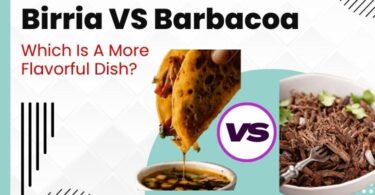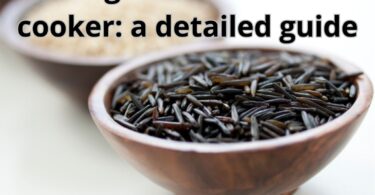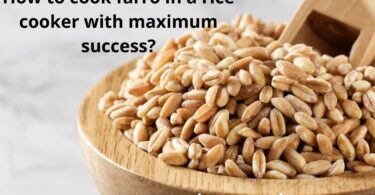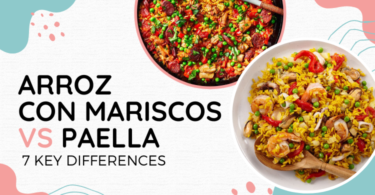Your rice is bubbling like soap due to the excessive starch content in it. Other possible reasons could be if you use the wrong quantities of water or rice while cooking. Moreover, a malfunctioning lid on your rice cooker can lead to rice bubbling issues.
That is the concise answer. To know details of all of the possible reasons behind why rice is bubbling like soap and the solutions, continue reading the article.
Key Takeaways
- Having an excessive amount of starch in rice is the most common reason for rice bubbling like soap. To prevent this, try rinsing the rice properly or choose an alternative rice with less starch in it.
- The use of excessive water or rice can lead to rice bubbling. In this case, try to follow the proper water-to-rice ratio while cooking.
- Another reason is when your rice cooker’s lid is malfunctioning, it can show bubbles. In this case, try to get a replacement lid from the manufacturer.
- Rice that produces soap-like bubbles is safe to consume as these bubbles are typically formed from a combination of water and starch.
Why Does Rice Bubble Like Soap?
While cooking rice, you may see rice bubbling like soap. This can happen because of several reasons. In the following table, we have summarized the reasons and quick solutions for those problems.
| Reasons | Solutions |
| Too much starch in rice | Use different rice with less starch and wash the rice properly |
| Use of excessive water | Fill the rice cooker as per its recommended capacity |
| Use of excessive rice | Use the correct water-to-rice ratio |
| Lid not working | Get a replacement lid |
However, there’s more to it. To know details about each reason and solution, read along. We have carefully analyzed the problems and explained the solutions in detail.
Reason 1: Too much starch in rice
Starch is the component of rice that enables the bubbles to become large and soapy. Therefore, the more the starch content in rice, the soapier the bubbles, and the greater the chances of boiling over.
![Why Is My Rice Bubbling Like Soap? [Reasons & Solutions] 1 why is my rice bubbling](https://ricecreamshoppe.com/wp-content/uploads/2023/04/why-is-my-rice-bubbling.jpg)
The two types of starch found in rice are amylose and amylopectin. Out of these two types, amylose does not tend to break down often. Hence, amylose-containing rice releases less starch while cooking.
Solution
If you choose to cook a variety of rice rich in starch, you must wash it thoroughly to avoid soapy bubbles forming. Washing rinses off the coating of starch on rice grains. So, it is advised to wash the rice two to three times before cooking.
If you have the freedom to choose alternative rice varieties, you should choose the rice type that is high in amylose starch content. Rice with long grains contains amylose of 20 to 24%.
Some of the most popular long-grain rice types are basmati, aromatic, jasmine, and toro rice.
Reason 2: Use of excessive water
Since the bubbles in rice cooking are formed mainly due to the water, excess water will cause excess bubbles.
When the water level exceeds the capacity of the cooker, more steam and pressure are created than normal. This helps the bubbles to move the lid and flow out. During high water levels, the bubble easily reaches the lid.
Solution
You should use a certain amount of water to avoid rice bubbling like soap. Find the user manual for your rice cooker. If you don’t have the original one that came with the purchase, you can find it online.
The manual contains the recommended capacity of water for the cooker, which you should carefully follow to avoid any bubbling problems.
Also, If you are in the middle of cooking and think that you have already used too much water, cook the rice on low heat. This will give the rice time to cook and fewer bubbles will be formed.
As a result, the soapy bubble issue will not occur due to a reduction in steam and pressure.
Reason 3: Use of excessive rice
As commonly known, rice expands upon cooking. Hence, if too much rice is put in, it will take up more room in the cooker. This leaves the steam that is created nowhere to go. As a result, pressure builds up.
This pressure gives the bubbles in the cooker the push needed to move the lid and get out.
Solution
To prevent bubbling over from happening, make sure you follow the correct water-to-rice ratio. For every 2 parts of water, 1 part of rice has to be used. To cook rice that is firmer, use ⅔ parts rice for every part water.
To cook rice efficiently, you can also get help from the flash rice function of a good rice cooker.
![Why Is My Rice Bubbling Like Soap? [Reasons & Solutions] 2 why is my rice cooker bubbling over](https://ricecreamshoppe.com/wp-content/uploads/2023/04/why-is-my-rice-cooker-bubbling-over.jpg)
Reason 4: Lid not working
If you have a lid on your rice cooker that is too light, the bubbling issue can happen frequently. When the water is heated, steam begins to accumulate. As a result, more bubbles are created.
When enough pressure has built up inside the cooker, it makes the bubbles push off the lid and flow out.
Solution
To solve the lid issue, you may call your rice cooker manufacturer and ask for a replacement lid. If that does not work, you can try placing some weight on top of the lid while cooking to prevent it from toppling over.
Alternatively, you can choose to buy a rice cooker with a lid-locking system. These rice cookers have a fixed lid, meaning that the lid won’t fall off while cooking. Also, if you want to make some fried rice, pick the best woks on the market.
Is Rice Bubbling Like Soap Harmful To Consume?
Generally, rice that produces soap-like bubbles is considered safe to consume. These bubbles are typically formed from a combination of water and starch, both of which are safe for consumption.
However, an excessive amount of bubbles can indicate overcooking. As a result, it can lead to undesirable texture and flavor in the rice.
Also, if you’ve added other ingredients to the rice, the increased bubbling can affect the overall taste of the dish. Sometimes, the water may boil over due to the bubbles, creating a mess on your stove.
To prevent this, it’s important to monitor the rice while it cooks and adjust the heat as needed to prevent the water from spilling over.
In summary, although consuming rice with soap-like bubbles isn’t inherently dangerous, it can alter the texture and flavor of both the rice and any additional ingredients.
To achieve evenly cooked rice without excessive starch bubbles, it’s advisable to use the recommended amount of water and follow the suggested cooking methods.
Tips to Prevent Your Rice From Bubbling Over in a Pot
When you do not have a rice cooker, the soapy bubble issue may still be a problem for you. So, here are a few tips to cook your rice without the hassle of a boil-over.
- Ensure the pot you use is big enough to hold the rice and water without filling it to the brim. As a general rule, the pot should be about twice the volume of the rice you are cooking. Also, do not use short pots like pans to cook rice.
- Before cooking, rinse the rice thoroughly in a strainer under cold running water to remove excess starch. This will help prevent the rice from boiling over.
- Cook the rice on low heat. Once the water has come to a boil, reduce the heat to low and cover the pot with a tight-fitting lid. This will create a gentle simmer and prevent the rice from boiling over. Alternatively, you can use a smart rice cooker that automatically knows when to reduce the heat and stop.
- Put in one to two tablespoons of oil or butter for 2 cups of rice while cooking the rice. The oil or butter creates a layer on top of the water that helps to keep the bubbles from forming and rising to the surface.
Why Is My Rice Mushy?
Mushy rice typically results from overcooking or absorbing excessive liquid. In such situations, allowing the rice to cool can improve its texture because excess moisture evaporates as steam.
Alternatively, use a fine-mesh sieve to remove excess water. Place the rice in the sieve for about a minute. Gently stir with a spoon so that the water can get drained. These methods can help rescue mushy rice by reducing its moisture content.
Why is My Rice Sticky?
When rice coated with starch is added to boiling water, the starch expands and becomes adhesive.
As the rice absorbs the water and the grains draw closer together, they start sticking to each other. Thankfully, the straightforward solution is to rinse the rice properly.
Place your uncooked rice in a spacious bowl, fill it with cold water, and use your hands to stir the rice in the water. You’ll notice that the water becomes cloudy. This happens because of the starch.
Then, filter the rice through a fine-mesh sieve. After that repeat this process three more times until the water runs clear.
Frequently Asked Questions (FAQs):
What Does It Mean If Rice Is Shiny?
Polished rice undergoes a milling process that removes the husk, bran, and germ, resulting in a shiny white appearance. Compared to unpolished or brown rice, polished rice has a quicker cooking time but contains fewer nutrients.
What Happens If Rice Is Undercooked?
Eating raw or uncooked rice is unsafe for two reasons. Firstly, rice can host harmful bacteria capable of causing food poisoning. Secondly, it contains a protein that the body cannot effectively digest, leading to potential health issues.
How Long Does It Take For Rice To Cook?
Given that you are cooking white rice, it will take 15 to 25 minutes to complete cooking. You will know it is completely cooked if you see all the water has evaporated and the rice looks soft and white.
Conclusion
To sum up, that should answer all your doubts related to the query “Why is my rice bubbling like soap?”. Follow the solutions and tips in the article to get perfectly cooked rice without soap bubble problems. Good luck!







[…] The rice is cooked with a higher liquid-to-rice ratio and takes longer to cook than regular rice, resulting in a soupier texture. However using rice with great amount starch can caus the rice bubble like soap. […]
[…] For one cup of rice, the cooking time ranges from 18 to 23 minutes, while for two cups, it takes 21 to 26 minutes. In the case of three cups, the duration extends to 23 to 28 minutes. Rice cpokers automatically adjust cooking time for best result and prevent scenarios like rice being bubbling like soap. […]